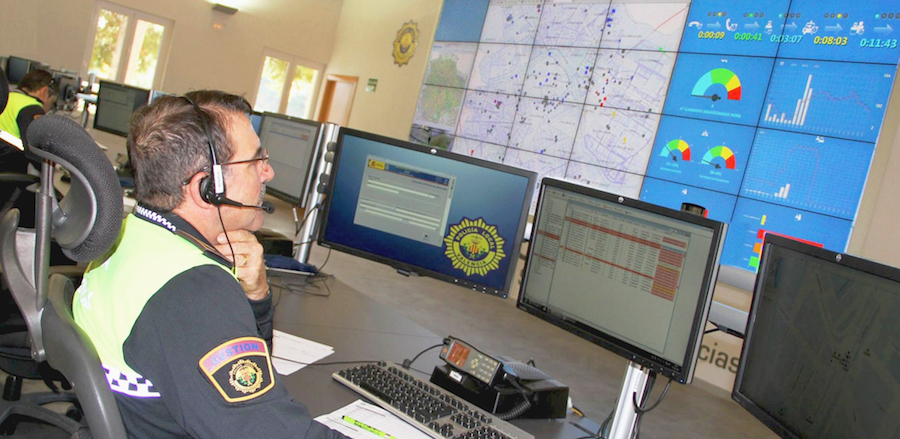
by Anthony King
Crimes that involve chemical, biological, radiological or nuclear (CBRN) materials pose a deadly threat not just to the target of the attack but to innocent bystanders and police investigators. Often, these crimes may involve unusual circumstances or they are terrorist-related incidents, such as an assassination attempt or the sending of poisons through the mail.
In the recent notorious case of poisoning in the UK city of Salisbury in March 2018, a number of first responders and innocent bystanders were treated in hospital after two victims of chemical poisoning were found unconscious on a park bench. One policeman who attended the scene became critically ill after apparent exposure to a suspected chemical weapon, said to be a special nerve agent called novichok. Police said a total of 21 people required medical care after the incident.
Past examples of rare but toxic materials at crime scenes include the 2001 anthrax letter attacks in the US and the Tokyo subway sarin gas attack in 1995. Following the radioactive poisoning of the Russian former spy, Alexander Litvinenko in London, UK, in 2006, investigators detected traces of the toxic radioactive material polonium in many locations around the city.
Despite these dangers, crime scene investigators must begin their forensic investigations immediately. European scientists are developing robot and remote-sensing technology to provide safe ways to assess crime or disaster scenes and begin gathering forensic evidence.
Harm’s way
‘We will send robots into harm’s way instead of humans,’ explained Professor Michael Madden at the National University of Ireland Galway, who coordinates a research project called ROCSAFE. ‘The goal is to improve the safety of crime scene investigators.’
The ROCSAFE project, which ends in 2019, will deploy remote-controlled aerial and ground-based drones equipped with sensors to assess the scene of a CBRN event without exposing investigators to risk. This will help to determine the nature of the threat and gather forensics.
In the first phase of a response, a swarm of drones with cameras will fly into an area to allow investigators to view it remotely. Rugged sensors on the drones will check for potential CBRN hazards. In the second phase, ground-based robots will roll in to collect evidence, such as fingerprint or DNA samples.
The ROCSAFE aerial drone could assess crime or disaster scenes such as that of a derailed train carrying radioactive material. It will deploy sensors for immediate detection of radiation or toxic agents and collect air samples to test later in a laboratory. Meanwhile, a miniature lab-on-a-chip on the drone will screen returned samples for the presence of viruses or bacteria, for instance.
An incident command centre usually receives a huge volume of information in a short space of time – including real-time video and images from the scene. Commanders need to process a lot of confusing information in an extreme situation quickly and so ROCSAFE is also developing smart software to lend a hand.
Rare events
‘These are rare events. This is nobody’s everyday job,’ said Prof. Madden. ‘We want to use artificial intelligence and probabilistic reasoning to reduce cognitive load and draw attention to things that might be of interest.’
As an example, image analysis software might flag an area with damaged vegetation, suggest a possible chemical spill and suggest that samples be taken. Information such as this could be presented to the commander on a screen in the form of a clickable map, in a way that makes their job easier.
Sometimes, the vital evidence itself could be contaminated. ‘There may be some physical evidence we need to collect – a gun or partly exploded material or a liquid sample,’ said Prof. Madden. ‘The robot will pick up, tag and bag the evidence, all in a way that will stand up in court.’ The researchers are constructing a prototype six-wheeled robot for this task that is about 1.5-metres-long and that can handle rough terrain.
Helping forensic teams to deal with hazardous evidence is a new forensic toolbox called GIFT CBRN. The GIFT researchers have devised standard operating procedures on how to handle, package and analyse toxins such as the nerve-agent ricin, which is deadly even in minute amounts.
When the anthrax powder attacks took place in the US in 2001, the initial response of the security services was slow, partly because of the unprecedented situation. GIFT scientists have drawn up ‘how to’ guides for investigators, so they can act quickly in response to an incident.
‘We want to find the bad guys quickly so we can stop them and arrest those involved,’ said Ed van Zalen at the Netherlands Forensic Institute, who coordinated the GIFT project.
Nerve agents
As well as containment, GIFT devised sensing technology such as a battery-powered boxed device that can be brought to a crime scene to identify nerve agents like sarin within an hour or two. This uses electrophoresis, a chemical technique that identifies charged molecules by applying an electric field and analysing their movements. Usually, samples must be collected and returned to the lab for identification, which takes far longer.
Additionally, they developed a camera to detect radioactive material that emits potentially damaging radiation called alpha particles. This form of radiation is extremely difficult to detect and even a Geiger counter – used to detect most radiation – cannot pick it up. The substance polonium, used to murder Litvinenko, emits alpha particles which create radiation poisoning but because it was a novel attack, the failure to detect it initially slowed the police investigation.
‘That detector would have been very helpful at the time of the Litvinenko case,’ said van Zalen.
The research in this article is funded by the EU.